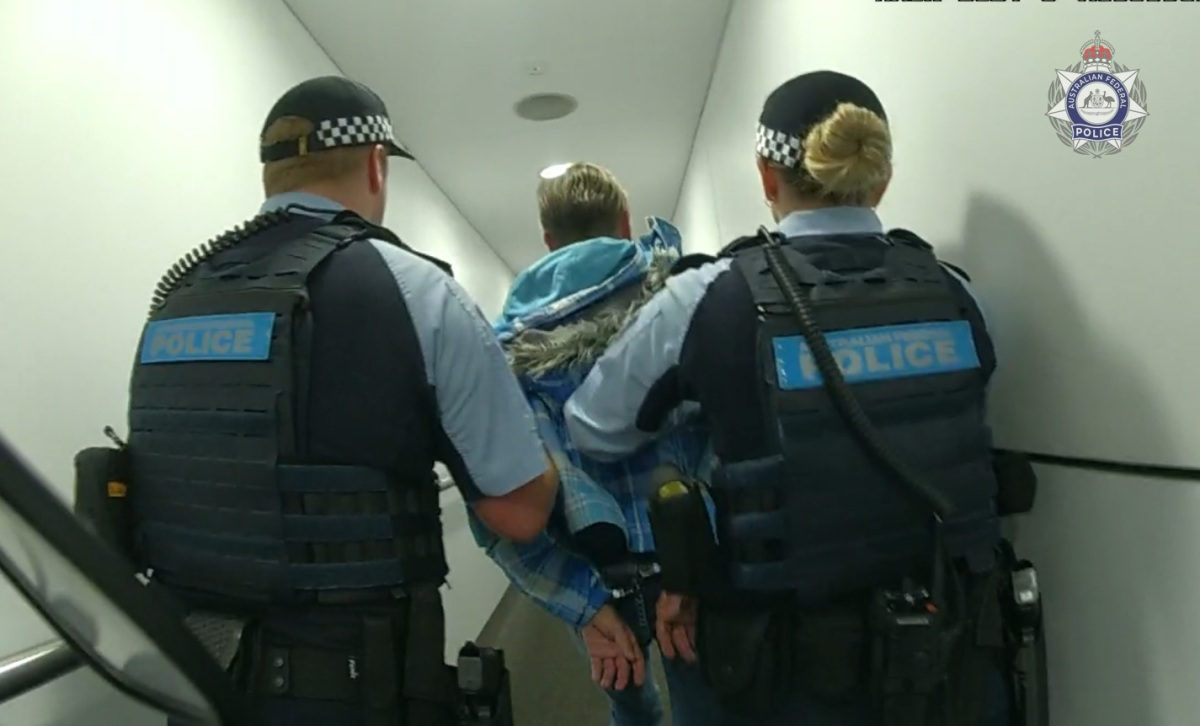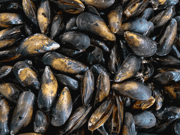
A routine Qantas flight to New Zealand erupted into chaos before it even left Sydney Airport.
An allegedly intoxicated passenger forced the aircraft to return to the gate, leaving fellow travellers shocked and crews scrambling.
The unfolding drama was caught on police body cameras, capturing a tense standoff.
Australian Federal Police officers boarded the plane to confront a woman who had allegedly been swearing at cabin crew and dancing in the aisle during taxi preparations.
When asked to leave, she argued and refused to comply, resulting in her arrest on the boarding ramp.
This incident is part of a growing problem in the skies.
In 2024, air rage occurred once every 395 flights, amounting to 255 incidents daily—or 92,405 cases worldwide per year.
What may appear as isolated bad behaviour is increasingly a serious safety and operational concern for airlines.
'It's a pressure-cooker environment. When you have long delays and passengers already stressed, it doesn't take much for someone to snap.'
Research analysing 228 air rage incidents found alcohol consumption was involved in 55.7 per cent of cases, with 76.2 per cent of perpetrators being male.
The most frequent age group for unruly passengers was 30-39 years, though air rage can affect travellers of any age.
The financial consequences are staggering.
Flight diversions cost airlines between AUD 26,700 on short-haul routes and up to AUD 145,960 on long-haul flights, with worst-case scenarios exceeding AUD 534,000.
This excludes ripple effects like disrupted connections, displaced crews, and hundreds of inconvenienced passengers.
Air rage by the numbers
255 incidents occur daily worldwide (2024 data)
One incident for every 395 flights globally [1][2]
35.5 per cent of incidents require flight diversions [8]
85 per cent of flight attendants dealt with unruly passengers in the past year [9]
Alcohol involved in 55.7 per cent of cases [4]
The human cost is equally concerning.
Many flight attendants reported feeling unsafe while dealing with unruly passengers, with 85 per cent encountering such behaviour in the past year.
One US flight attendant described it as 'emotionally draining'.
Air rage triggers go beyond alcohol.
Packed cabins, delayed flights, and general travel frictions contribute to tensions, while jet lag, fear of flying, and difficult nearby passengers can escalate agitation.
Australia has adopted a zero-tolerance approach.
Airlines can impose fines of up to AUD 11,100 for passengers who abuse or assault others, and the Civil Aviation Safety Authority reserves the right to use stun guns when necessary.
The woman involved in the Sydney incident was charged under civil aviation regulations for failing to comply with cabin crew instructions, carrying a maximum penalty of AUD 16,500 and two years imprisonment, along with additional charges for obstructing Commonwealth officials.
For everyday travellers, air rage is more than an inconvenience.
Pilots may be forced to divert flights or make emergency landings to maintain safety, while delayed departures affect everyone on board.
Protecting yourself and others while flying
- Avoid excessive alcohol consumption before and during flights
- Stay patient during delays—they affect everyone equally
- Report concerning behaviour to cabin crew immediately
- Don't engage with agitated passengers directly
- Keep your seatbelt fastened when seated to avoid being thrown during turbulence caused by diversions
The woman was released and returned to New Zealand the next day, but court proceedings could result in significant penalties and a criminal record.
A message for the aviation industry is clear.
'Without consistent enforcement across borders, deterrence doesn't work,' an IATA official warned.
The Montreal Protocol 2014 expands legal jurisdiction to the country where an aircraft lands, helping ensure offenders face consequences.
AFP Detective Acting Inspector Trevor Robinson said, 'Anyone misbehaving on a flight and not cooperating with law enforcement isn't just spoiling their trip, but they are potentially ruining the travel plans of hundreds of other people. They also face the possibility of a criminal conviction on their record for life.'
As air travel continues to recover post-pandemic, incidents like this Sydney Airport drama serve as a reminder that flying is a privilege that carries responsibilities for both passengers and the industry.
What This Means For You
Air rage incidents are becoming increasingly common, with 255 cases reported daily across the globe, showing that disruptive passenger behaviour is not just rare bad luck but a growing concern for travellers and airlines alike.
Alcohol consumption and passenger stress remain the biggest triggers, although delays, crowded cabins, and other travel frustrations also play a significant role in escalating tensions on flights.
The financial impact is substantial, with airlines facing costs ranging from AUD 26,700 for short-haul diversions to over AUD 534,000 in worst-case scenarios, highlighting how a single passenger’s behaviour can affect hundreds of travellers and the airline’s bottom line.
Strict enforcement and international protocols are essential in deterring such behaviour, and as passengers, being aware of these risks can help us contribute to a safer, calmer travel experience for everyone on board.
Breaking Point in the Skies: Surge in Air Rage Alarms Airlines and Regulators — Reports air rage incidents occurred once every 395 flights in 2024, equating to 255 daily or 92,405 yearly.
https://42kft.com/breaking-point-in-the-skies-surge-in-air-rage-alarms-airlines-and-regulators/
Descriptive analysis of air rage incidents aboard international commercial flights, 2000–2020 — Analyses 228 air rage incidents, noting alcohol involvement in 55.7 per cent of cases and 76.2 per cent of perpetrators being male; identifies most frequent age group as 30–39 years.
https://www.sciencedirect.com/science/article/pii/S259019822100124X
Why air rage is on the rise — Highlights Australia’s zero-tolerance airline policies, including fines up to $11,100 for abusive passengers.
https://www.traveller.com.au/why-air-rage-is-on-the-rise-h26o2y
Air rage — Wikipedia — Details triggers of air rage such as stress, jet lag, delays, and passenger fear; notes the Civil Aviation Safety Authority can use stun guns on unruly passengers.
https://en.wikipedia.org/wiki/Air_rage
List of air rage incidents — Notes incidents often require flight diversions and emergency landings to remove disruptive passengers; mentions criminal charges for non-compliant passengers.
https://en.wikipedia.org/wiki/List_of_air_rage_incidents
Have you witnessed disruptive behaviour during your travels, or do you have thoughts on how airlines should handle these situations?







